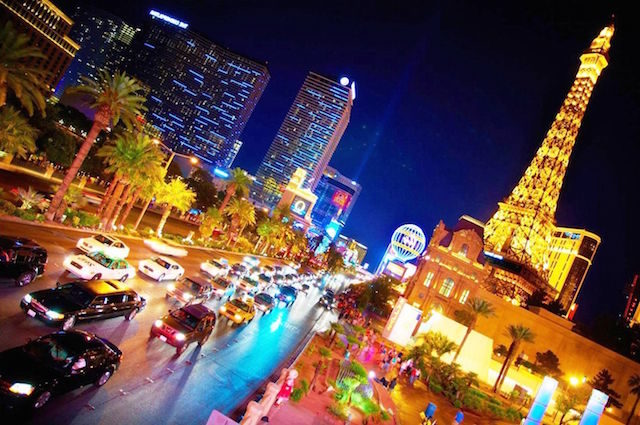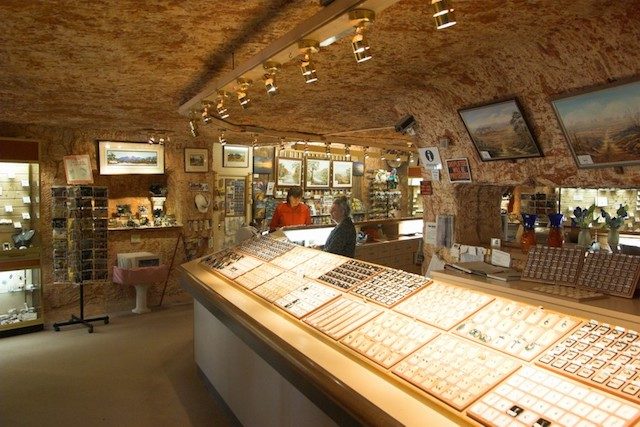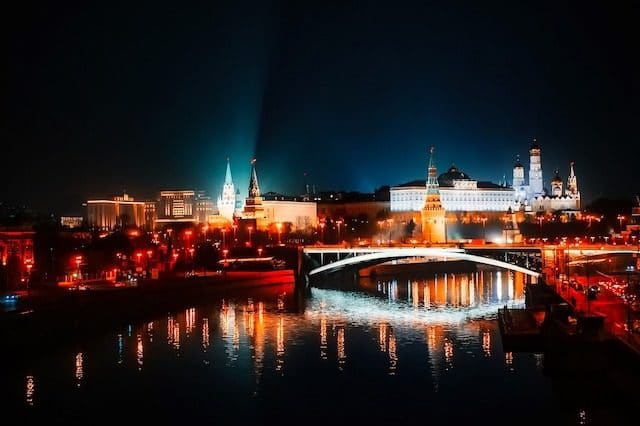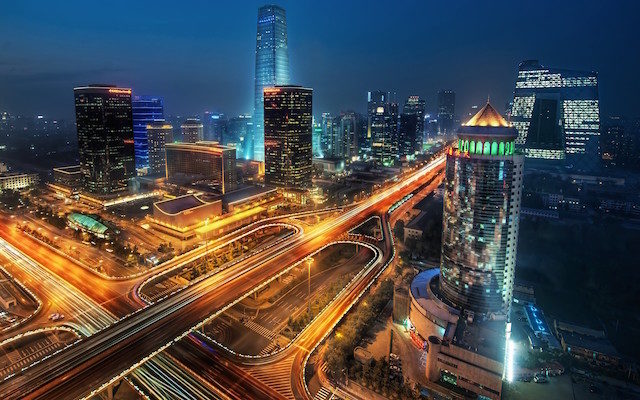The idea of a world beneath our feet has been fascinating to people for ages. It’s a staple of old science fiction in stories like Journey to the Center of the Earth and the Divine Comedy both describe incredibly rich and detailed worlds and even in modern times the idea that there’s something more down below exists in films like Godzilla vs King Kong and THX 1138.
Caves, tunnels, subways and subterranean structures all feed into the idea that there absolutely could be a society underground somewhere. And even though no society has fully lived underground before, it doesn’t mean that smaller groups haven’t done it.
10. The New York Tunnel Dwellers
According to New York transit officials, there are about 350 people who call the network of subway tunnels beneath New York City home. Upwards of 1,000 shelter there regularly, though the city is now invested in removing them entirely.
The first subway opened back in 1904 and the system has been an iconic part of the city ever since. There are 230 miles of tunnels down there, not to mention a number of secret stations and tunnels that no longer see use. Except by the city’s homeless population.
While officials have identified nearly 30 encampments of homeless today, the situation is not new at all. A movie called Dark Days documented the lives of the tunnel dwellers back in 1990. And before that, the New York Times ran headlines about a “hobo colony” under Park Avenue back in 1977. The tradition of living down there is a long one, and even if current plans go ahead, it seems unlikely the tunnels will remain empty for long.
9. The Community in Las Vegas Storm Tunnels

Like New York, Las Vegas has become a prime location for a thriving population of homeless people living beneath the streets. While Vegas does not have a subway system, it does have a network of storm tunnels which, combined with a desert climate, make it an enticing home for those who have no alternatives.
The estimates of how many people live below Las Vegas can vary greatly. Some suggest around 300 people live in the tunnels, while others put the number in the thousands. The population includes the homeless, addicts, and criminals spread through 600 miles of tunnels.
One of the big dangers for the tunnel people in Vegas is that the tunnels are specifically meant to deal with rain water. If a storm hits, the people below are in danger of having everything washed away and potentially drowning. Many of them have built remarkably elaborate and large structures from salvaged scraps that serve as homes.
The tunnel dwellers, also called mole people, have their own rules that all residents in an area are expected to follow. These are regulated by people referred to as mayors, who determine who can stay and who must go.
There are organizations who are dedicated to helping the tunnel dwellers, but not everyone wants to be helped and you can imagine how fighting issues with addiction, whether it be drugs or gambling, can be an uphill battle in a place like Las Vegas.
8. The Gully Queens of Jamaica
Homelessness is by no means exclusively an American problem. In Jamaica, there are a group of people, often referred to as Gully Queens, who live in the sewers to escape persecution from those who might do them violence. Life can be especially hard for the LGBT community in Jamaica, which is often cited as one of, if not the most, difficult places in the world for that community. Prejudice can and does manifest in the form of violence and it’s not unheard of for families to disown children who come out as gay or trans. Those people often find themselves in the sewers as a result, one of the few places where they are accepted.
A 2014 documentary chronicled the lives of these Gully Queens. According to reports, upwards of 80% of residents in Jamaica harbor anti-gay beliefs, meaning acceptance is remarkably hard to come by. Sexual relations among gay men is still illegal in Jamaica and offenders could face up to a decade in prison.
7. Homeless Beneath Manchester

Across the pond in the UK, the city of Manchester has developed its own problem with homeless people living beneath the streets. The community there is smaller and some of the residents are immigrants who came to England for work but soon found themselves losing their jobs with nowhere else to turn.
The community, which is described as being small, has set up in a manner similar to the other groups we’ve seen. Sofas and other furnishings, even area rugs and dressers, to try to make the area seem more like a home. The dangers, of course, come from sudden turns in the weather and human factors, including theft and violence.
Those who live there do their best to make it liveable, moving from shack to shack around the city and bathing at hostels several times a week.
6. The Bucharest Mole People
Bucharest, the capital of Romania, is over 500 years old and the cultural and financial center of the country. Beneath the city is an entirely separate city of people who live in the sewers and have done so for years. Generations, in fact, as families live down there and children grow to be adults with their own families. Exact numbers are impossible to pinpoint, but estimates are in the hundreds.
When the Soviet Union fell in 1989, all Romanian orphanages closed. Literally thousands of children were put onto the streets with nothing, and many of them headed underground to try to survive. In the 30 years that followed, many of those children grew up and started their own families, perpetuating the issue.
In addition, the tunnels have attracted drug addicts and other homeless in addition to the children who were put out back in the 80s. Even interviewing those who live in the tunnels requires permission from the leader. The place is so packed there’s little room for anyone new wanting in.
5. The Paris Catacombs
The 2014 horror film As Above, So Below introduced a lot of people to a part of Paris no one had ever seen before. Beneath the city is a labyrinth of catacombs beset with human remains. Walls lined with skulls and other bones stretch for 200 miles. Some have collapsed and there is no map or set path that can lead anyone safely through the place.
The remains are the result of Parisian officials of the past running out of room for them above ground. With cemeteries literally overflowing after poor weather caused corpses to spill into the streets, the tunnels became the final resting place for around 6 million former residents. Prior to that, the tunnels were the result of limestone mining dating back to the 13th century, which linked quarries.
Over the years, the tunnels have housed criminals and refugees. In more recent times, there has been growing evidence of more and more people in tunnels that are meant to be off limits. At one point, an entire underground cinema with room for 30, a bar and a restaurant was discovered by officials.
4. San Antonio Homeless City

In 2020, officials in San Antonio, Texas, discovered an entire community of homeless people beneath the city when touring the drainage tunnels after getting some complaints from local businesses near the highway the tunnels run underneath.
Someone saw a person entering a tunnel and local police investigated only to discover a network of tunnels and rooms. The smaller tunnels gave way to a series of much bigger tunnels over ten feet tall and within it they discovered what the chief of police described as “unbelievable.”
He described a small, subterranean town full of shopping carts, furniture, food, and filth. The smell was apparently shocking. The population of the community grew due to the Covid-19 pandemic, but police have been making regular sweeps to try to clear them out.
3. Coober Pedy, Australia is Mostly Underground

For the closest thing you’re likely to find to a true underground society, head to Coober Pedy, Australia. Founded as an opal mining town, most of the property was built underground, including homes and businesses and even the local church. Because it’s located in the harsh outback of Australia, summer temperatures can reach a scorching 120 degrees or more. Imagine trying to be an opal miner in those conditions and it becomes easier to understand why the locals began to build down rather than up.
Today, 60% of the town’s 3,500 residents live underground. This is the culmination of 100 years of history after a single piece of opal was discovered on the site by a teenager in the early 1900s. Eventually it began the world’s biggest source of opal, though the mine has since run nearly dry. There is still opal being mined, but at far less volume.
Because of the climate and location, locals are able to generate 70% of the town’s power through renewable sources like wind and solar.
2. Moscow Sewer People

Moscow can get very cold in the winter, with temperatures averaging around 14 degrees Fahrenheit to 25 degrees Fahrenheit, and dipping as low as -44 degrees Fahrenheit at some points. With a population of nearly 12 million, there are an estimated 100,000 homeless in the city.
In order to escape the deadly cold, a number of the city’s homeless head underground to the sewers where heating pipes can offer warmth against the elements. Like any major city, Moscow is a big draw for those who live in outlying communities. People go there to find work and make their mark. But an economic downturn made Russia as vulnerable as anywhere else, and opportunities for work were hard to come by. Add in the fact that Russian officials routinely push the homeless out of warm places above ground, and the sewers become one of the only options.
Huddled around heating pipes, some of the homeless point out that even homeless shelters turn people away if they don’t meet certain criteria. When Sky News spoke to someone who worked in an outreach center dealing with the homeless, they said that homelessness in was a lifestyle choice, which means there is little sympathy for those struggling with it.
1. The Cold War-Era Underground City Below Beijing

We said at the outset that there has been no completely subterranean society in history and while that’s true; it doesn’t mean there is not an incredibly large community that lives underground. Today, in Beijing, China, you can find a city beneath the city in which one million residents call the world below home.
At the height of the Cold War, China was on high alert as much as the USA and the Soviet Union. In order to prepare for the potential of nuclear war, Chairman Mao had an entire city built below Beijing. The result was 10,000 bomb proof bunkers that were later leased out to landlords once the country opened itself up in the 1980s.
The bunkers were cut up into tiny residential units and, today, one million people rent these rooms barely big enough to hold one bed in some cases. Laws state that any residence needs to be at least 43 square feet per tenant. These bunker homes do not follow the laws.
The complex is sometimes called The Dungeon, and for many low income workers in the city, it’s the only option. Some residents are reluctant to be interviewed or seen on camera for fear their families will see them and realize how bad things have gotten. Many of these people came to the city from smaller communities expecting good jobs with good pay, but found few opportunities awaiting them and were unable or unwilling to return home.
Part of the reason this massive city is so overpopulated is due to the Beijing housing market. In 2017, one square meter of Beijing real estate would set you back $5,820. On the other hand, a nuclear bunker apartment can go for about $40 a month.